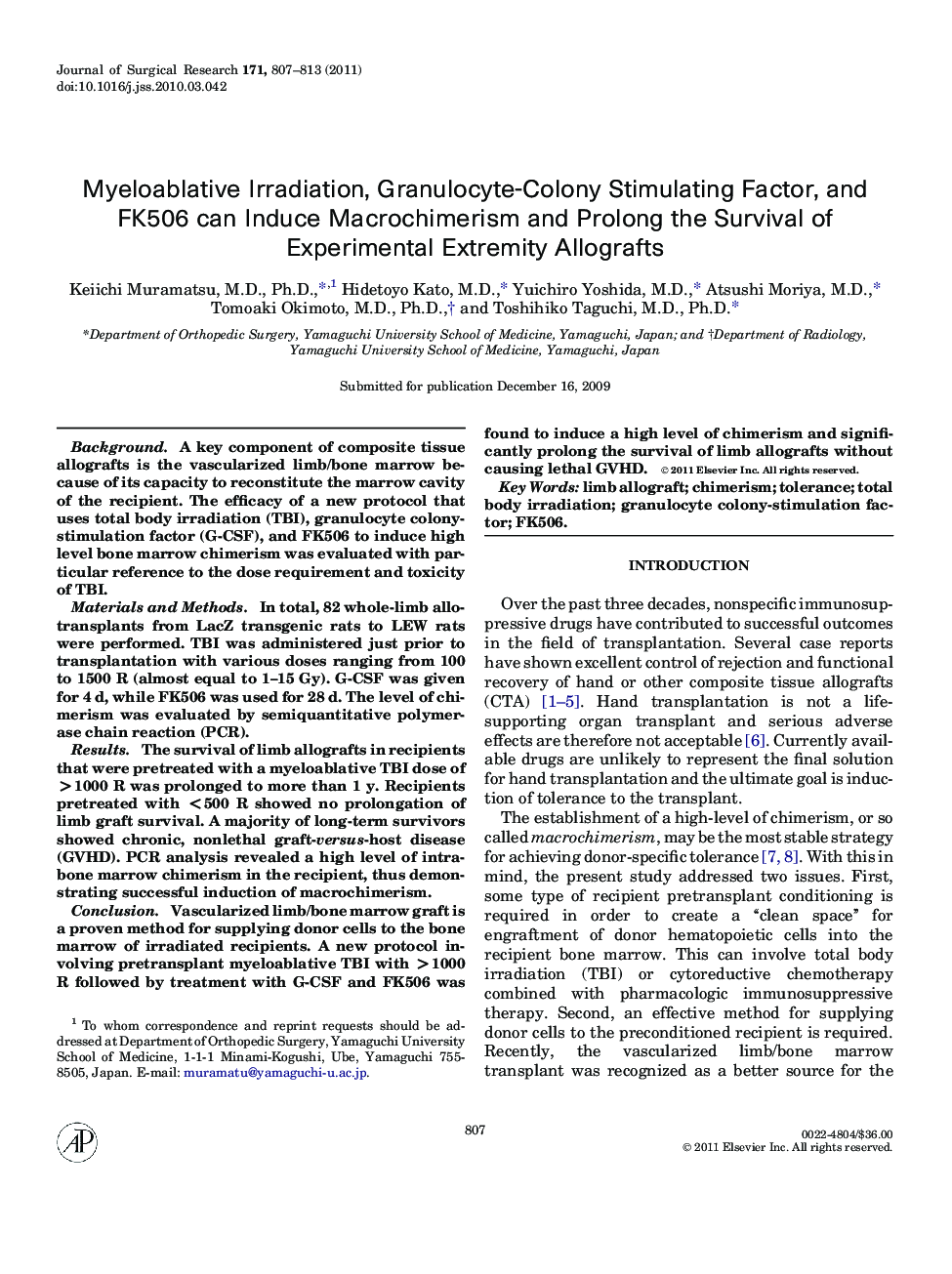| Article ID | Journal | Published Year | Pages | File Type |
|---|---|---|---|---|
| 4301886 | Journal of Surgical Research | 2011 | 7 Pages |
BackgroundA key component of composite tissue allografts is the vascularized limb/bone marrow because of its capacity to reconstitute the marrow cavity of the recipient. The efficacy of a new protocol that uses total body irradiation (TBI), granulocyte colony-stimulation factor (G-CSF), and FK506 to induce high level bone marrow chimerism was evaluated with particular reference to the dose requirement and toxicity of TBI.Materials and MethodsIn total, 82 whole-limb allotransplants from LacZ transgenic rats to LEW rats were performed. TBI was administered just prior to transplantation with various doses ranging from 100 to 1500 R (almost equal to 1–15 Gy). G-CSF was given for 4 d, while FK506 was used for 28 d. The level of chimerism was evaluated by semiquantitative polymerase chain reaction (PCR).ResultsThe survival of limb allografts in recipients that were pretreated with a myeloablative TBI dose of >1000 R was prolonged to more than 1 y. Recipients pretreated with <500 R showed no prolongation of limb graft survival. A majority of long-term survivors showed chronic, nonlethal graft-versus-host disease (GVHD). PCR analysis revealed a high level of intra-bone marrow chimerism in the recipient, thus demonstrating successful induction of macrochimerism.ConclusionVascularized limb/bone marrow graft is a proven method for supplying donor cells to the bone marrow of irradiated recipients. A new protocol involving pretransplant myeloablative TBI with >1000 R followed by treatment with G-CSF and FK506 was found to induce a high level of chimerism and significantly prolong the survival of limb allografts without causing lethal GVHD.
